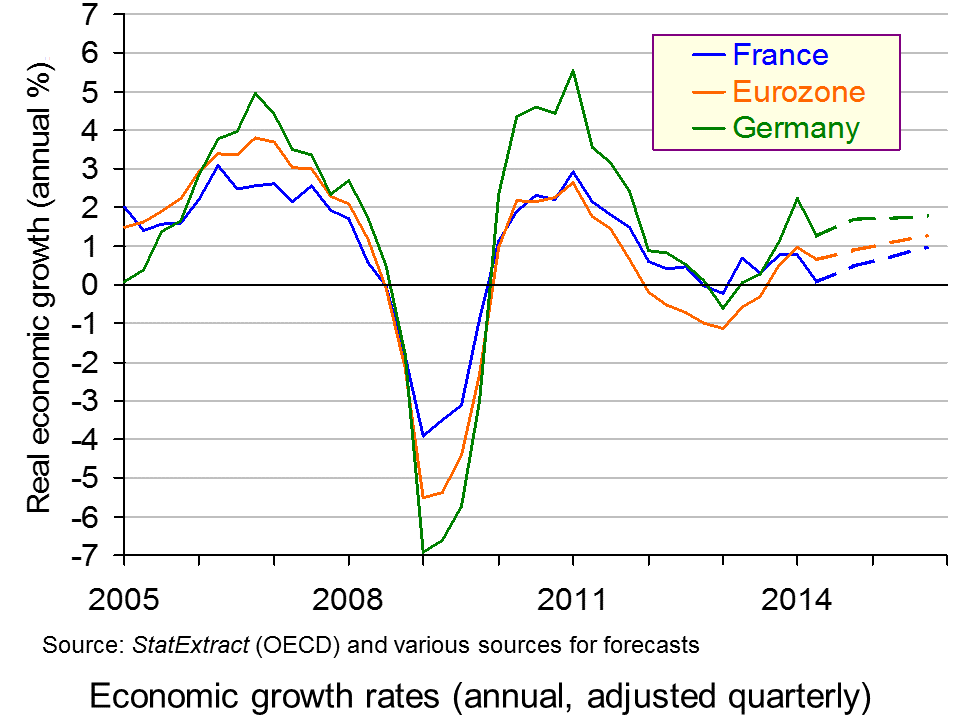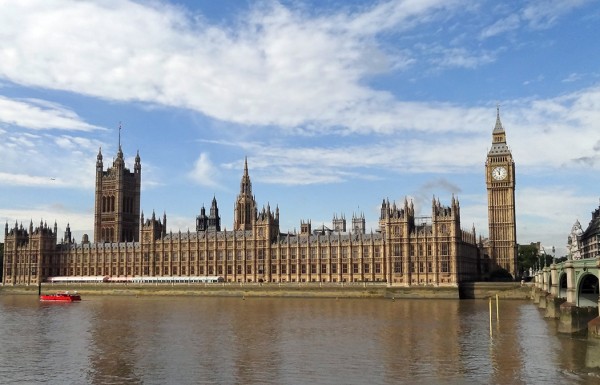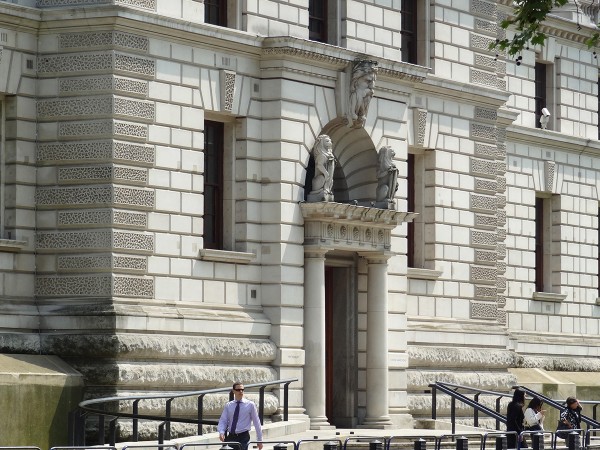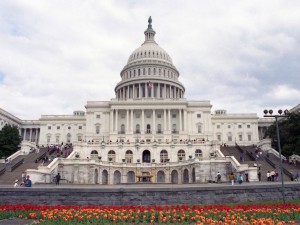 The French economy is flatlining. It has just recorded the second quarter of zero economic growth, with growth averaging just 0.02% over the past 12 months. What is more, the budget deficit is rising, not falling. In April this year, the French finance minister said that the deficit would fall from 4.3% in 2013 to 3.8% in 2014 and to the eurozone ceiling of 3% in 2015. He is now predicting that it will rise this year to 4.4% and not reach the 3% target until 2017.
The French economy is flatlining. It has just recorded the second quarter of zero economic growth, with growth averaging just 0.02% over the past 12 months. What is more, the budget deficit is rising, not falling. In April this year, the French finance minister said that the deficit would fall from 4.3% in 2013 to 3.8% in 2014 and to the eurozone ceiling of 3% in 2015. He is now predicting that it will rise this year to 4.4% and not reach the 3% target until 2017.
The deficit is rising because a flatlining economy is not generating sufficient tax revenues. What is more, expenditure on unemployment benefits and other social protection is rising as unemployment has risen, now standing at a record 10.3%.

And it is not just the current economic situation that is poor; the outlook is poor too. The confidence of French companies is low and falling, and investment plans are muted. President Hollande has pledged to cut payroll taxes to help firms, but so far this has not encouraged firms to invest more.
So what can the French government do? And what can the EU as a whole do to help revive not just the French economy but most of the rest of the eurozone, which is also suffering from zero, or near zero, growth?
There are two quite different sets of remedies being proposed.

The first comes from the German government and increasingly from the French government too. This is to stick to the austerity plans: to get the deficit down; to reduce the size of government in order to prevent crowding out; and to institute market-orientated supply-side policies that are business friendly, such as reducing business regulation. Business leaders in France, who generally back this approach, have called for reducing the number of public holidays and scrapping the maximum 35-hour working week. They are also seeking reduced business taxes, financed by reducing various benefits.
Increasingly President Hollande is moving towards a more business-friendly set of policies. Under his government’s ‘Responsibility Pact’, a €40 billion package of tax breaks for business will be financed through €50 billion of cuts in public spending. To carry through these policies he has appointed an ex-investment banker, Emmanuel Macron, as economy minister. He replaces Arnaud Montebourg, who roundly criticised government austerity policy and called for policies to boost aggregate demand.

This brings us to the alternative set of remedies. These focus on stimulating aggregate demand through greater infrastructure investment and cutting taxes more generally (not just for business). The central argument is that growth must come first and that this will then generate the tax revenues and reductions in unemployment that will then allow the deficit to be brought down. Only when economic growth is firmly established should measures be taken to cut government expenditure in an attempt to reduce the structural deficit.
There are also compromise policies being proposed from the centre. These include measures to stimulate aggregate demand, mainly through tax cuts, accompanied by supply-side policies, whether market orientated or interventionist.

As Europe continues to struggle to achieve recovery, so the debate is getting harsher. Monetary policy alone may not be sufficient to bring recovery. Although the ECB has taken a number of measures to stimulate demand, so far they have been to little avail. As long as business confidence remains low, making increased liquidity available to banks at interest rates close to zero will not make banks more willing to lend to business, or businesses more willing to borrow. Calls for an end, or at least a temporary halt, to austerity are thus getting louder. At the same time, calls for sticking to austerity and tackling excessive government spending are also getting louder.
Articles
Hollande entrusts French economy to ex-banker Macron Reuters, Ingrid Melander and Jean-Baptiste Vey (26/8/14)
France’s new Minister of the Economy Emmanuel Macron described by left-wingers as a ‘copy-and-paste Tony Blair’ Independent, John Lichfield (28/8/14)
Merkel praises France’s economic reform plans after Berlin talks with PM Valls Deutsche Welle (22/9/14)
French economy flat-lines as business activity falters Reuters, Leigh Thomas (23/9/14)
French public finances: Rétropédalage The Economist (13/9/14)
French employer group urges ‘shock therapy’ for economy Reuters (24/9/14)
Last chance to save France: loosen 35-hour week and cut public holidays, say bosses The Telegraph (24/9/14)
‘Sick’ France’s economy is stricken by unemployment ‘fever’ The Telegraph (17/9/14)
France’s economics ills worsen but all remedies appear unpalatable The Observer, Larry Elliott and Anne Penketh (31/8/14)
The Fall of France The New York Times, Paul Krugman (28/8/14)
Why Europe is terrified of deflation Salon, Paul Ames (20/9/14)
Europe’s Greater Depression is worse than the 1930s The Washington Post, Matt O’Brien (14/8/14)
Worse than the 1930s: Europe’s recession is really a depression The Washington Post, Matt O’Brien (20/8/14)
Eurozone business growth slows in September, PMI survey finds BBC News (23/9/14)
Europe must ‘boost demand’ to revive economy, US warns BBC News (21/9/14)
Valls says France would never ask Germany to solve its problems Reuters, Annika Breidthardt and Michelle Martin (23/9/14)
The euro-zone economy: Asset-backed indolence The Economist (11/9/14)
Data
Annual macro-economic database (AMECO) Economic and Financial Affairs DG, European Commission
Business and Consumer Surveys Times Series Economic and Financial Affairs DG, European Commission
StatExtracts OECD
Statistics database European Central Bank
Questions
- What types of supply-side reforms would be consistent with the German government’s vision of solving Europe’s low growth problem?
- How could a Keynesian policy of reflation be consistent with getting France’s deficit down to the 3% of GDP limit as specified in the Stability and Growth Pact (see)?
- What is meant by (a) financial crowding out and (b) resource crowding out? Would reflationary fiscal policy in France lead to either form of crowding out? How would it be affected by the monetary stance of the ECB?
- Give examples of market-orientated and interventionist supply-side policies.
- What is meant by the terms ‘cyclical budget deficit’ and ‘structural budget deficit’. Could demand-side policy affect the structural deficit?
- Using the European Commission’s Business and Consumer Surveys find our what has happened to business and consumer confidence in France over the past few months.
- How important is business and consumer confidence in determining economic growth in (a) the short term and (b) the long term?
 The Autumn Statement, delivered annually by the Chancellor of the Exchequer in late November or early December, is rather like a second Budget. In his statement, the Chancellor presents new forecasts for the UK economy by the Office for Budget Responsibility (OBR) and announces various policy changes in the light of the forecasts.
The Autumn Statement, delivered annually by the Chancellor of the Exchequer in late November or early December, is rather like a second Budget. In his statement, the Chancellor presents new forecasts for the UK economy by the Office for Budget Responsibility (OBR) and announces various policy changes in the light of the forecasts.
So what does this OBR say? Its headline reads, “Government borrowing revised higher as weaker economy hits revenues” and this is followed by the statement:
The OBR has revised up its forecasts for public-sector borrowing over the next five years, as a weaker outlook for the economy reduces tax revenues. As a result, the Government no longer seems likely to achieve its target of reducing public-sector net debt in 2015–16.
 The chart shows OBR forecasts for public-sector net borrowing made in June 2010 (its first forecast after the OBR was formed by the Coalition government), in March 2012 and in December 2012. The current forecast clearly shows borrowing set to decline more slowly than in the earlier forecasts. Click here for a PowerPoint of the chart. (Note that the effects of transferring the pension assets of the Royal Mail to the Treasury and the effects of not paying interest to the Bank of England on government bonds purchased under quantitative easing programmes have not been included in order to make the three forecasts consistent.)
The chart shows OBR forecasts for public-sector net borrowing made in June 2010 (its first forecast after the OBR was formed by the Coalition government), in March 2012 and in December 2012. The current forecast clearly shows borrowing set to decline more slowly than in the earlier forecasts. Click here for a PowerPoint of the chart. (Note that the effects of transferring the pension assets of the Royal Mail to the Treasury and the effects of not paying interest to the Bank of England on government bonds purchased under quantitative easing programmes have not been included in order to make the three forecasts consistent.)
So with a weaker economy and slower recovery than previously forecast, what are George Osborne’s options? He and his colleagues, along with various economists, argue for sticking to Plan A. This means continuing with austerity measures in order to get the public-sector deficit down. But with government borrowing having fallen more slowly than forecast, this means further government expenditure cuts, such as reductions in benefits, cuts in grants to local authorities and reductions in pensions relief. Even so, achieving his two targets – (1) eliminating the cyclically adjusted current (as opposed to capital) budget deficit by 2015/16 (the so-called ‘fiscal mandate’), and (2) public-sector debt falling as a proportion of GDP by 2015/16 – will both be missed. They were extended by a year in the Budget last March. They have now been extended by a further year to 2017/18.
The opposition and many other economists argue that Plan A has failed. Austerity has prevented the economy from growing and has thus meant a slower reduction in the deficit as tax revenues have not grown nearly as much as hoped for. A more expansionary policy would allow the deficit to be reduced more quickly, especially if extra government expenditure were focused on infrastructure and other capital spending.
 It could be argued that George Osborne’s Autumn Statement moves some way in this direction – a Plan A+. He is making deeper cuts in welfare and government departmental spending in order to divert monies into capital spending. For example, there will be £1bn of extra expenditure on roads; £1bn extra on schools; £270m on FE colleges; and £600m extra for scientific research. Also, by extending the period of austerity to 2017/18, this has meant that he has not had to make even deeper cuts. What is more, he is increasing income tax allowances and cutting the rate of corporation tax by 1% more than originally planned and scrapping the planned 3p per litre rise in road fuel duty. He hopes to make up any lost tax revenue from these measures by HMRC clamping down on tax evasion.
It could be argued that George Osborne’s Autumn Statement moves some way in this direction – a Plan A+. He is making deeper cuts in welfare and government departmental spending in order to divert monies into capital spending. For example, there will be £1bn of extra expenditure on roads; £1bn extra on schools; £270m on FE colleges; and £600m extra for scientific research. Also, by extending the period of austerity to 2017/18, this has meant that he has not had to make even deeper cuts. What is more, he is increasing income tax allowances and cutting the rate of corporation tax by 1% more than originally planned and scrapping the planned 3p per litre rise in road fuel duty. He hopes to make up any lost tax revenue from these measures by HMRC clamping down on tax evasion.
But by sticking to his broad austerity strategy, and with many parts of the global economy having weakened, it looks as if the UK economy is in for several more years of sluggish growth. Winter is going to be long.
Webcasts and Podcasts
 Autumn Statement: George Osborne scraps 3p fuel duty rise BBC News, Carole Walker (5/12/12)
Autumn Statement: George Osborne scraps 3p fuel duty rise BBC News, Carole Walker (5/12/12)
 Autumn Statement: OBR says deficit ‘shrinking more slowly’ BBC News, Robert Chote (5/12/12)
Autumn Statement: OBR says deficit ‘shrinking more slowly’ BBC News, Robert Chote (5/12/12)
 Autumn Statement: Headlines from George Osborne’s speech BBC News, Andrew Neil (5/12/12)
Autumn Statement: Headlines from George Osborne’s speech BBC News, Andrew Neil (5/12/12)
 Autumn Statement: Flanders, Robinson and Peston reactio BBC News, Stephanie Flanders, Nick Robinson and Robert Peston (5/12/12)
Autumn Statement: Flanders, Robinson and Peston reactio BBC News, Stephanie Flanders, Nick Robinson and Robert Peston (5/12/12)
 Boosting the British Budget CNN, Jim Boulden (5/12/12)
Boosting the British Budget CNN, Jim Boulden (5/12/12)
 Autumn statement 2012: key points – video analysis The Guardian, Larry Elliott, Jill Treanor, Patrick Collinson and Damian Carrington (5/12/12)
Autumn statement 2012: key points – video analysis The Guardian, Larry Elliott, Jill Treanor, Patrick Collinson and Damian Carrington (5/12/12)
Articles
Autumn Statement 2012: the full speech The Telegraph (5/12/12)
Autumn Statement: Benefit squeeze as economy slows BBC News (5/12/12)
Autumn Statement: At-a-glance summary of key points BBC News (5/12/12/)
Austerity to last until 2018, admits George Osborne Independent, Oliver Wright
Autumn statement: George Osborne reveals benefits cut Channel 4 News (5/12/12/)
Autumn Statement 2012: Cut welfare, create jobs – a very Tory statement The Telegraph, Damian Reece (5/12/12)
Autumn statement 2012: economy weaker than expected, Osborne says The Guardian, Heather Stewart (5/12/12)
Analysis: Even the ‘autumn’ bit seemed optimistic BBC News, Chris Mason (5/12/12)
George Osborne’s autumn statement 2012: reaction The Guardian, Julia Kollewe (5/12/12)
Candid Osborne avoids political risk Financial Times, Janan Ganesh (5/12/12)
Autumn statement: Why George Osborne’s Budget won’t be a game changer The Telegraph, Allister Heath (4/12/12/)
Autumn statement 2012: expert verdict The Guardian, Richard Murphy, Dominic Raab, Ann Pettifor, Gavin Kelly, Prateek Buch and Mark Serwotka (5/12/12/)
The alternative autumn statement Channel 4 News (5/12/12)
Autumn Statement 2012: man cannot live by deficit reduction alone The Telegraph, Roger Bootle (5/12/12)
Autumn statement: cuts are just a sideshow The Guardian, John Redwood (5/12/12)
What does the Autumn Statement mean for business? Economia, David Mellor (5/12/12)
Autumn Statement Reaction: UK AAA ‘safe for today’ Investment Week (5/12/12)
Autumn Statement: A wintry statement of reality BBC News, Stephanie Flanders (4/12/12)
What has changed? BBC News, Stephanie Flanders (6/12/12)
UK warned on debt ‘credibility’ over AAA rating BBC News (5/12/12)
Data
Autumn statement 2012 in charts The Guardian, Simon Rogers (5/12/12/)
Who suffers most from Britain’s austerity? How the figures stack up The Guardian, Tom Clark (5/12/12)
Economic and fiscal outlook charts and tables – December 2012 OBR (5/12/12)
Economic and fiscal outlook supplementary economy tables – December 2012 OBR (5/12/12)
Forecasts for the UK economy HM-Treasury
OBR, Treasury and IFS links
Economic and fiscal outlook – December 2012 OBR (5/12/12)
Autumn Statement 2012 HM Treasury (5/12/12)
Autumn Statement 2012 IFS
Questions
- Distinguish between ‘stocks’ and ‘flows’. Define (a) public-sector net borrowing (PSNB) and (b) the public-sector net debt (PSND) and explain whether each one is a stock or a flow.
- Summarise the measures announced by George Osborne in his Autumn Statement.
- What are his arguments for not adopting a more expansionary fiscal policy?
- Assess his arguments.
- What is meant by the ‘output gap’? What are the OBR’s forecasts about the output gap and what are the implications?
- How has quantitative easing affected PSNB and PSND?
- Distinguish between the cyclical and structural deficit. What implications does this distinction have for fiscal policy?
 There seems to be consensus among most politicians on both sides of the Atlantic that there needs to be a reduction in government deficits and debt as a proportion of GDP. But there is considerable debate as to how such reductions should be achieved.
There seems to be consensus among most politicians on both sides of the Atlantic that there needs to be a reduction in government deficits and debt as a proportion of GDP. But there is considerable debate as to how such reductions should be achieved.
Conservatives, Republicans and centre right parties in Europe, such as Greece’s Νεα Διμοκρατια (New Democracy) party, believe that there should be tough policies to reduce government expenditure and that the deficit should be reduced relatively quickly in order to retain the confidence of markets.
Politicians on the centre left, including Labour, many Democrats in the USA and centre-left parties in Europe, such as François Hollande’s Socialists, argue that the austerity policies pursued by centre-right governments have led to a decline in growth, which makes it harder to reduce the current deficit.
Then there is debate about what is happening to the structural deficit – the deficit that would remain at a zero output gap. Politicians on the centre right argue that their austerity policies are leading to a rapid reduction in the structural deficit. This, combined with the supply-side policies they claim they are implementing, will allow growth to be resumed more quickly and will increase the long-term growth rate (i.e. the growth in potential output).
Politicians on the centre left argue that deep cuts, by reducing short-term growth (even making it negative in some cases, such as the UK), are discouraging investment and construction. This in turn will lower the growth in potential output and make it harder to reduce the structural deficit.
The following podcast and articles consider these arguments – arguments that are often badly put by politicians, who often use ‘questionable’ economics to justify their party line.
Podcast
 A grand economic experiment (also at) More or Less: BBC Radio 4 (first part), Tim Harford (4/5/12) (Programme details)
A grand economic experiment (also at) More or Less: BBC Radio 4 (first part), Tim Harford (4/5/12) (Programme details)
Articles
The fine art of squeezing: Britain vs America BBC News, Stephanie Flanders (4/5/12)
The Slippery Structural Deficit Wall Street Journal (blog), Matthew Dalton (11/5/12)
The right kinds of austerity policy Financial Times (1/5/12)
We can fix up the old status quo to get out of this mess The Olympian, David Brooks (11/5/12)
Europe’s austerity drive is a misdiagnosis of its problems Gulf News, Joseph Stiglitz (13/5/12)
How Nick Clegg got it wrong on debt Guardian, Polly Curtis (9/5/12)
Ten Reasons Wall Street Should Be (Very) Worried About The U.S. Debt Forbes, Bruce Upbin (4/5/12)
Questions
- Distinguish between the structural and cyclical budget deficit.
- Explain the distinction between stocks and flows. Which of the following are stocks and which are flows: (a) public-sector deficit; (b) public-sector debt; (c) public-sector net cash requirement; (d) debt reduction; (e) a bank’s balance sheet?
- Under what circumstances will a reduction in the public-sector deficit lead to: (a) a reduction in the public-sector debt (total); (b) a reduction in the public-sector debt as a proportion of GDP?
- How would you decide what is the desirable level of the public-sector deficit: (a) in the short run; (b) in the long run?
- Explain and comment on the following statement from the Stephanie Flanders article: “What is clear is that America has been able to ‘cut its debt (sic) further and faster’ than Britain – but this has not been the result of any closet commitment to austerity. Quite the opposite.”
With an election approaching, there is much debate about recovery and cuts and about the relationships between the two. Will rapid cuts stimulate confidence in the UK by business and bankers and thereby stimulate investment and recovery, or will they drive the economy back into recession? The debate is not just between politicians vying for your vote; economists too are debating the issue. Many are taking to letter writing.
In the February 2010 news blog, A clash of ideas – what to do about the deficit, we considered three letters written by economists (linked to again below). There has now been a fourth – and doubtless not the last. This latest letter, in the wake of the Budget and the debates about the speed of the cuts, takes a Keynesian line and looks at the sustainability of the recovery – including social and environmental sustainability. It is signed by 34 people, mainly economists.
Letter: Better routes to economic recovery Guardian (27/3/10)
Letter: UK economy cries out for credible rescue plan Sunday Times, 20 economists (14/2/10)
Letter: First priority must be to restore robust growth Financial Times, Lord Skidelsky and others (18/2/10)
Letter: Sharp shock now would be dangerous Financial Times, Lord Layard and others (18/2/10)
Questions
- Summarise the arguments for making rapid cuts in the deficit.
- Summarise the arguments for making gradual cuts in the deficit in line with the recovery in private-sector demand.
- Under what conditions would the current high deficit crowd out private expenditure?
- What do you understand by a ‘Green New Deal’? How realistic is such a New Deal and would there be any downsides?
- Is the disagreement between the economists the result of (a) different analysis, (b) different objectives or (c) different interpretation of forecasts of the robustness of the recovery and how markets are likely to respond to alternative policies? Or is it a combination of two of them or all three? Explain your answer.
- Why is the effect of the recession on the supply-side of the economy crucial in determining the sustainability of a demand-led recovery?
After each Budget, the Institute for Fiscal Studies analyses its effects. Given the highly charged political environment, with an election looming and the prospects of considerable public expenditure cuts to come, dispassionate analyses of the Budget are hard to find. The IFS’s analysis is a major exception.
The IFS summarises the Budget as being largely neutral. As Robert Chote, Director of the IFS, says in the opening remarks to the Post Budget Briefing:
In a Pre-Election Budget, perhaps the most that we can expect of any Chancellor is that he should observe the key tenet of the Hippocratic Oath and “above all, do no harm”. Judged against that modest yardstick, the broadly neutral stance of this Budget passes the test.
But, the Budget avoided giving details of the cuts which are planned for the future. None of the political parties are saying just how they will achieve the necessary reductions to the deficit, although the Liberal Democrats have given some details.
Judged against the more testing yardstick of providing a detailed picture to voters and financial market participants of the fiscal repair job in prospect beyond the election, the Budget will have fallen short of many people’s hopes. There are an awful lot of judgements still to be made, or revealed, notably with regards public spending over the next parliament. This greater-than-necessary vagueness allows the opposition to be vaguer than necessary too.
The articles below look at the Budget and at the IFS’s assessment of it. There are also links to the sections of the IFS report. It is worth reading them if you are to be able to make the ‘cool’ judgements that economists can provide – even if they do not always agree!
Articles
Budget leaves questions unanswered – IFS Reuters (25/3/10)
Budget 2010: IFS warns transport and housing spending has to be cut Guardian, Phillip Inman (25/3/10)
Labour ‘has cost the rich £25,000 every year’ Independent, Sean O’Grady (26/3/10)
The pain to come The Economist (25/3/10)
 Chancellor’s ‘difficult balancing act’ BBC Today Programme (24/3/10)
Chancellor’s ‘difficult balancing act’ BBC Today Programme (24/3/10)
Pain deferred until the polls close Financial Times, Chris Giles (25/3/10)
IFS Report: Budget 2010
Links to the various supporting articles and the opening remarks can be found here.
Details of the Budget
See references in Darling and a case of fiscal drag? for details of the Budget measures.
Questions
- What do you understand by the ‘structrual’ deficit and the ‘cyclical’ deficit?
- Why do cyclical deficits rise during a recession?
- Why has the structural deficit risen during this recession? Is this an example of hysteresis? (Explain.)
- What is the Fiscal Responsibility Act and why does the government now expect to over-achieve the requirements of the Act?
- What elements of government spending are likely to be cut most? Is this a wise distribution of cuts?
- Use the links to the PowerPoint presentations from the IFS Budget Report site to (a) analyse the state of the public finances; (b) summarise the main tax changes in the Budget.
 The French economy is flatlining. It has just recorded the second quarter of zero economic growth, with growth averaging just 0.02% over the past 12 months. What is more, the budget deficit is rising, not falling. In April this year, the French finance minister said that the deficit would fall from 4.3% in 2013 to 3.8% in 2014 and to the eurozone ceiling of 3% in 2015. He is now predicting that it will rise this year to 4.4% and not reach the 3% target until 2017.
The French economy is flatlining. It has just recorded the second quarter of zero economic growth, with growth averaging just 0.02% over the past 12 months. What is more, the budget deficit is rising, not falling. In April this year, the French finance minister said that the deficit would fall from 4.3% in 2013 to 3.8% in 2014 and to the eurozone ceiling of 3% in 2015. He is now predicting that it will rise this year to 4.4% and not reach the 3% target until 2017.







